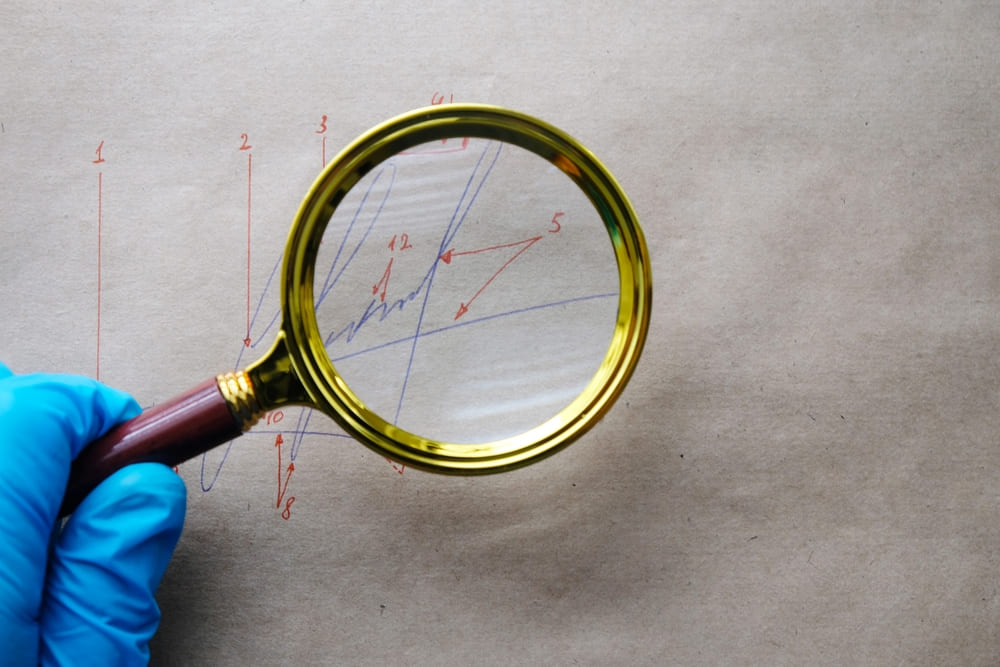In an age of increasing fraud and deception, signature fraud remains a common tool for criminals. Whether it’s a forged signature on a legal document, check, or contract, such fraud can have severe legal and financial repercussions. Knowing how to spot a fake signature is essential to protect yourself and your assets. This guide provides insights into signature fraud detection and how forensic document examiners uncover the truth.
What Is Signature Fraud?
Signature fraud occurs when a signature is forged, traced, or altered to impersonate someone else. Fraudulent signatures are often found in financial documents, wills, contracts, or any other legally binding agreements. Criminals may also use fake signatures to commit identity theft or fraudulently transfer assets.
Why Spotting Fake Signatures Is Crucial
Detecting signature fraud early can prevent costly legal battles, protect personal assets, and maintain document authenticity. Whether you’re signing a contract or validating a will, knowing how to identify suspicious signatures can save you from falling victim to fraud.
For professional insights on fraudulent document detection, visit the Expert Handwriting Examiner blog.
Top Methods to Spot a Fake Signature
Here are some expert techniques to identify fake signatures like a pro:
1. Examine Natural Variations in Handwriting
No two signatures are exactly the same, even when written by the same person. Genuine signatures often display subtle variations in:
- Letter spacing
- Stroke pressure
- Pen lifts
Fake Signatures: Forgeries tend to look too consistent, as the forger lacks the natural variations found in authentic handwriting.
Expert Tip: Compare the suspect signature with multiple known authentic samples to spot discrepancies.
2. Analyze Pen Pressure and Stroke Fluency
Genuine signatures have smooth, fluid strokes with consistent pressure. A fake signature often reveals:
- Uneven pressure
- Hesitation marks
- Wobbly or shaky lines
These signs indicate that the forger lacked confidence or attempted to copy the signature slowly.
3. Look for Tracing Marks
Tracing is a common technique used by forgers, where the original signature is replicated by outlining it through a transparent sheet. Traced signatures often show:
- Indentations on the paper
- Overlapping or inconsistent strokes
Detection Method: Use magnification or an electrostatic detection apparatus (ESDA) to identify these indentations.
Learn more about forgery detection techniques at 5 Warning Signs of Forgery in Legal Documents.
4. Inspect Ink Consistency
Forgeries often involve multiple attempts, leading to inconsistent ink flow. Look for:
- Overlapping strokes
- Smudging or ink pooling
- Changes in ink color or texture
Experts use infrared spectroscopy to compare ink compositions and confirm whether the same pen was used throughout the document.
5. Observe Signature Placement
A genuine signature is naturally aligned with the document. Forged signatures may appear:
- Misaligned with the text
- Irregular in angle
- Out of proportion with the surrounding elements
This irregularity often occurs when the forger attempts to match an original signature but fails to align it naturally.
6. Check for Mechanical Alterations
Some forgers use digital tools or mechanical methods, such as stamps, to create fake signatures. These mechanical forgeries often lack the fluidity and natural pressure variations found in genuine handwriting.
Detection Tools: Handwriting experts use microscopic analysis and UV imaging to detect mechanical alterations.
7. Compare with Known Exemplars
A signature must always be compared to known, verified examples (exemplars) of the individual’s handwriting. Differences in style, slant, or spacing are critical clues.
For expert assistance in detecting forged signatures, connect with a professional at Expert Handwriting Examiner.
Common Scenarios of Signature Fraud
Signature fraud can occur in various situations, including:
- Forgery in Financial Documents: Altering checks or promissory notes for monetary gain.
- Legal Document Fraud: Tampering with wills, deeds, or contracts.
- Identity Theft: Signing for credit card purchases or loans using a stolen identity.
For an in-depth guide to proving forged signatures, check out How to Spot and Prove a Forged Signature on a Document.
How Handwriting Experts Detect Fake Signatures
Professional forensic document examiners use advanced tools and methodologies to detect forged signatures. These include:
- Microscopic Analysis: Examining fine details of handwriting strokes.
- Infrared and Ultraviolet Imaging: Revealing ink inconsistencies or erased traces.
- Ink Chromatography: Analyzing ink composition to determine its authenticity.
- Electrostatic Detection Apparatus (ESDA): Detecting indentations left by tracing or alterations.
These methods ensure a thorough and accurate analysis of questionable signatures.
Why Hire a Forensic Document Examiner?
When dealing with suspected signature fraud, it’s essential to seek professional help. Forensic document examiners provide:
- Unbiased Analysis: A professional opinion based on scientific evidence.
- Court-Testified Expertise: Expert testimony in legal disputes.
- Comprehensive Reports: Detailed findings to support fraud claims.
For assistance with signature fraud, contact Expert Handwriting Examiner.
Tips to Prevent Signature Fraud
To protect yourself from signature fraud, follow these preventive measures:
- Use Secure Signing Methods: Opt for digital signatures with encryption for sensitive documents.
- Monitor Financial Transactions: Regularly review bank statements and financial records.
- Authenticate Important Documents: Verify signatures on legal documents with a handwriting expert.
- Preserve Originals: Avoid unnecessary handling of critical documents to prevent tampering.
Conclusion
Detecting signature fraud is a complex but critical process in safeguarding personal and professional interests. By understanding the signs of forgery and utilizing the expertise of forensic document examiners, you can protect yourself from fraud.
If you suspect a fake signature or need professional assistance, don’t hesitate to consult an expert. Visit Expert Handwriting Examiner for reliable forensic services.
For additional insights into proving forged signatures, explore How to Spot and Prove a Forged Signature on a Document.
